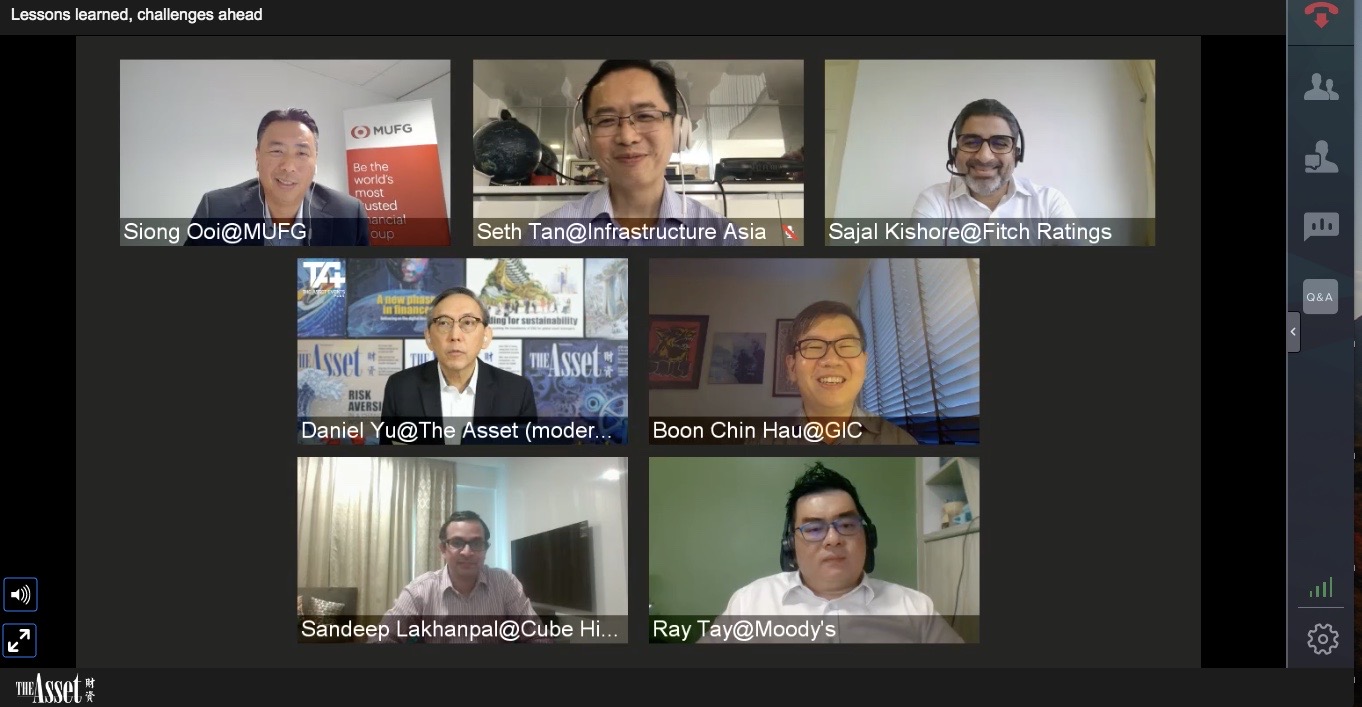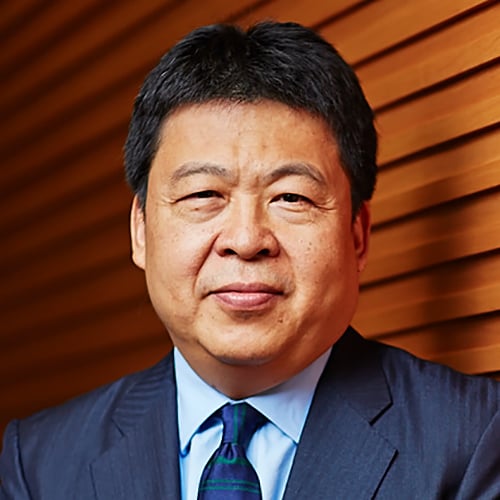INFRASTRUCTURE will continue to feature at the top of Asia-Pacific’s growth agenda despite the slowdown of financing during the first six months of 2020. However, there is going to be a shift in approach and priorities as activity resumes in the post-pandemic world.
This was the takeaway from The Asset Events+ Asia Infrastructure Finance Leadership Series, Lessons Learned, Challenges Ahead, which provided a 360-degree view from institutional investors, a project finance bank, credit rating agencies and Infrastructure Asia, the facilitation office set up by the Monetary Authority of Singapore and Enterprise Singapore, partner for this two-part leadership series.
Speakers shared their experience at the height of Covid-19 spread earlier in the year, which affected the operation of infrastructure assets especially airports and tollroads, when lockdowns and quarantine measures halted mobility across the region. At the same time, discussions on new project financing that were underway at the time were also suspended.
The pause from this pandemic is engendering a wholesale rethink of the region’s approach to infrastructure and financing. “There is a clear recognition that the infrastructure of the future cannot be the infrastructure of the past,” postulates Seth Tan, executive director at Infrastructure Asia. “Certain infrastructures are becoming important to a lot of governments including logistics and public health infrastructure. There is also a strong interest in clean energy particularly in renewable energy. Governments can use infrastructure to boost their economic recovery after the pandemic.”
Investors are understandably taking a cautious approach. “Diversification is a very important. When GIC’s infrastructure strategy was put together, we wanted to build a truly diversified portfolio across geographies and sectors. In this Covid-19 situation you have seen that transportation has been hit,” indicates Boon Chin Hau, managing director, head of infrastructure, Asia and emerging markets at GIC. “Renewable assets around the world, however, tend to be in demand now and has been doing well because the consumers require the basic good of power and electricity. If you have a portfolio across multiple sectors you can handle this current situation.”
Another investor, Sandeep Lakhanpal, head of M&A and business development, Cube Highways & Transportation, Assets Advisors, points out that the current situation affects particularly project sponsors that may have taken on too much leverage. “We are not overly worried even though we are in the specialized sector of toll roads because we were quite disciplined in managing our leverage. In these trying times if your leverage is managed, I think your cashflows are quite within control.”
It is the reason also why project finance banks are marking time although in part as a result of increased cost of funds especially as US dollar liquidity dried up during the early days of the pandemic. “Banks are looking at asset classes within infrastructure which are insulated from Covid-19 or less impacted from Covid-19,” explains Siong Ooi, managing director and co-head of debt capital markets, loans and bonds, Asian investment banking division, MUFG Bank. “We are seeing a preference for shorter tenors versus longer tenors reflecting the attitude for risk. In the past several months interestingly there has been some multi-billion-dollar PPP financings in which bids have gone in, which have been supported by the bank market.”
Infrastructure companies in this region, however, are in much better shape than in other parts of the world. “Airports are clearly the ones that are hurting the most and that is common across all geographies. The differences are really the type of the airport you are looking at. Some airports may have a higher share of domestic traffic for instance, which in some markets may have a relatively faster rebound in contrast to other markets,” Sajal Kishore, senior director, head of Asia Pacific infrastructure & project finance ratings, Fitch Ratings, explains. “In the US airports, they have a higher share of domestic traffic so does the Indian airports. But in the US there people are quite comfortable working at home now and this may affect business travel in the future. This may lead to a worser impact on the US airports compared to a growing economy like India.”
Ray Tay, senior vice-president, public, project and infrastructure finance group, at Moody’s Investor Service adds: “We are looking at what are the reactions from governments and from multilaterals. We can see now that governments and multilaterals have a strong incentive to encourage infrastructure spending. It’s part of their overall stimulus package.” Given the extent governments in the region have expanded budgetary outlay to support the emergency measures and mitigate the worst of this crisis, the next phase could see increased involvement of the private sector.
In addition, as yield-hungry investors search for yield, these private credit investors represent another pocket of liquidity for project finance in this region. “We are also focused on giving access to institutional investors into the infrastructure asset class,” points out MUFG’s Ooi. “In the private debt space, we have seen activity grow quite rapidly over the last couple of years. Banks may have a different set of objectives compared to an institutional investor like a life insurance company who is looking to long-dated assets.”
A greater focus on resiliency is another expected outcome of the next phase of infrastructure in Asia, believes Tan. “As a result of Covid-19, it’s almost becoming second nature to incorporate ESG, innovation, digitalization and also resilience into projects. I think the age of technology being too expensive is now gone. I think there is a lot of technology available in emerging markets that they can apply to their infrastructure development.” Combined with the increased attention to ESG (environmental, social, governance) factors and innovation, the future of infrastructure finance in the Asia-Pacific should be better able to weather the next crisis.
For more information about the virtual event hosted by The Asset Events+ please go here.










